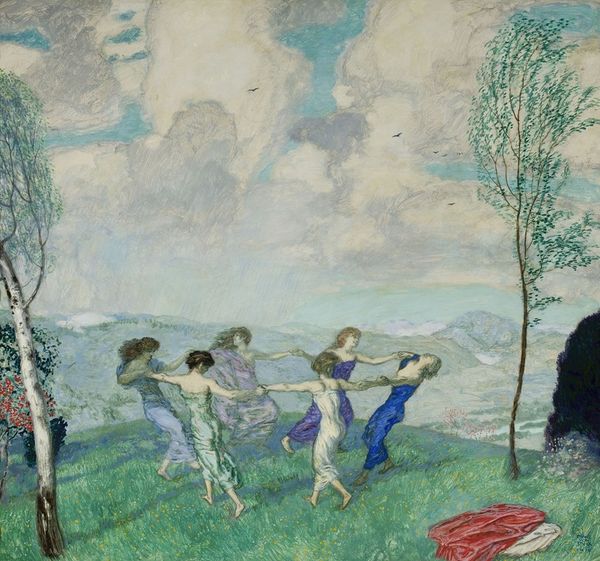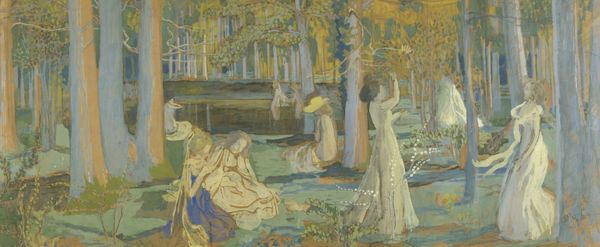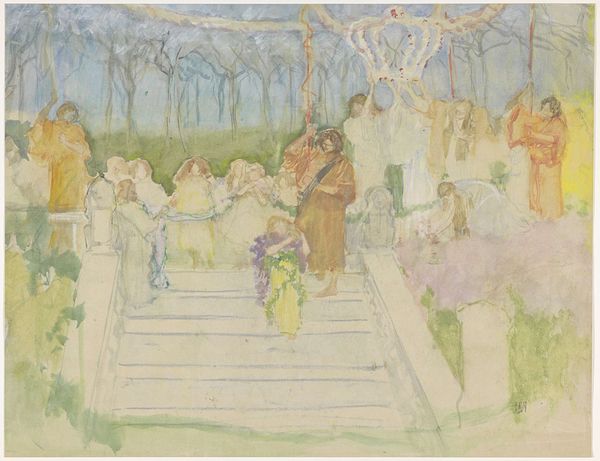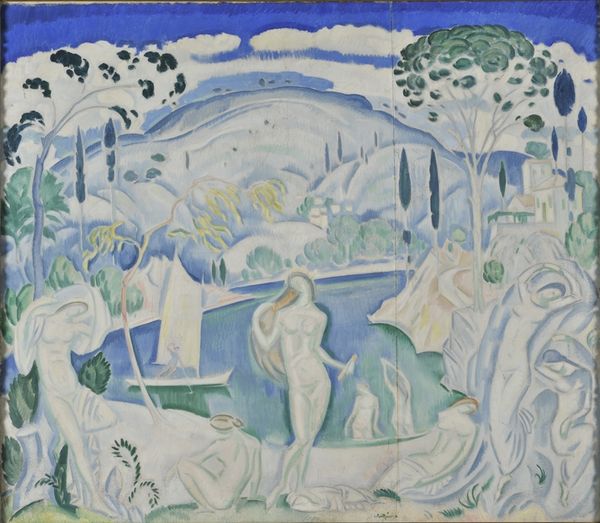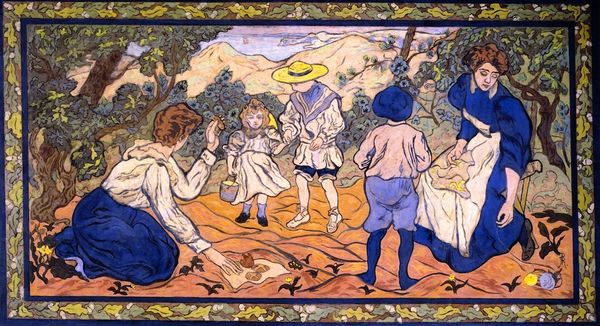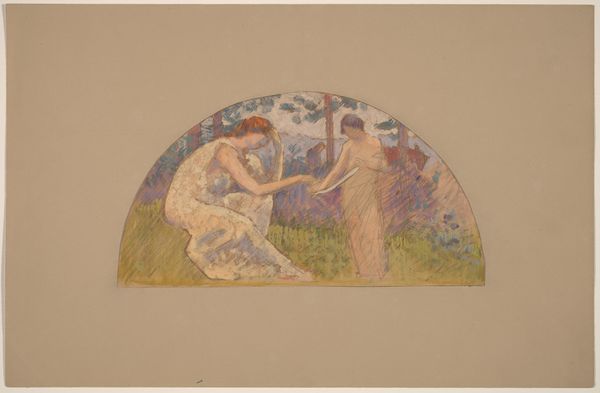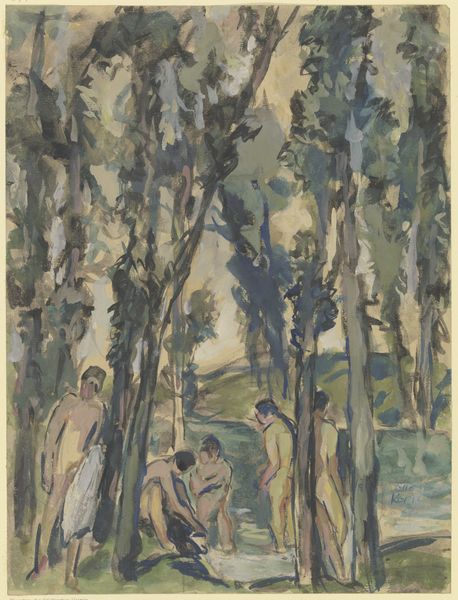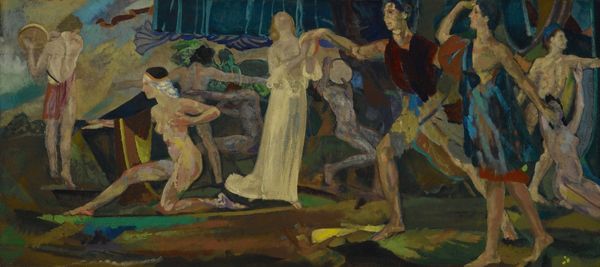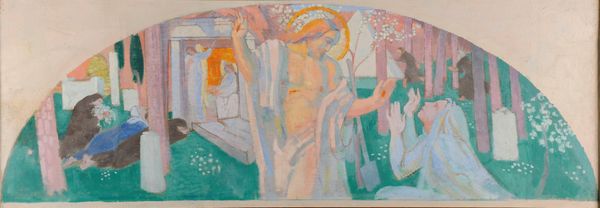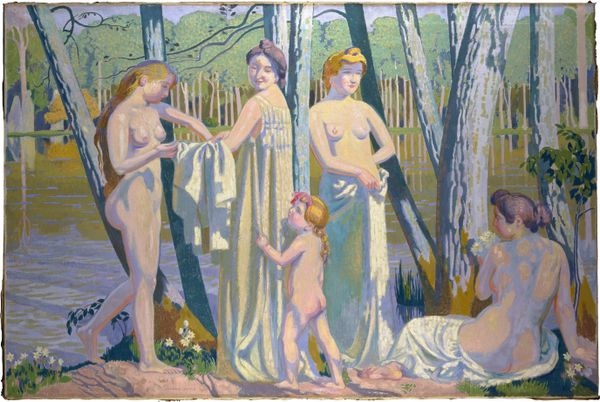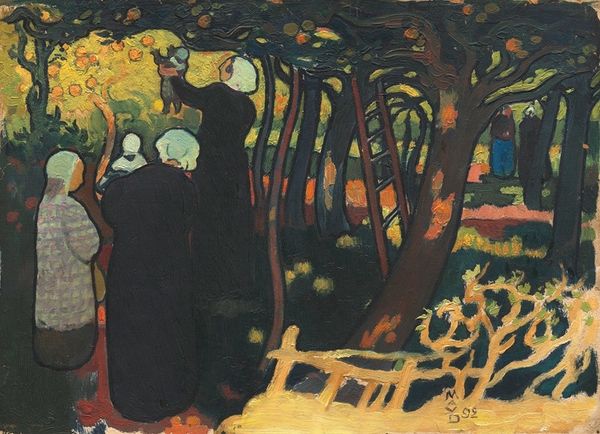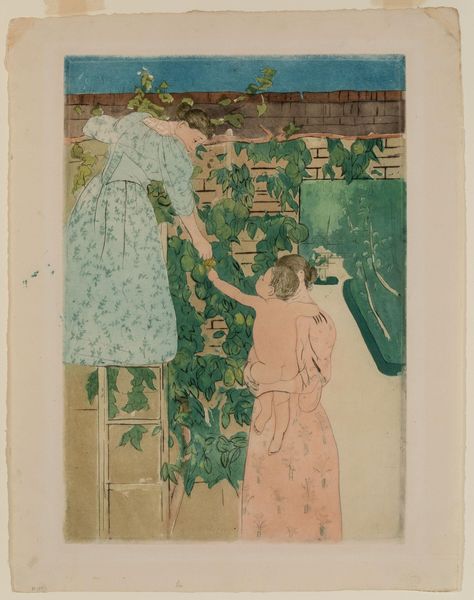
drawing, painting, watercolor
#
drawing
#
painting
#
landscape
#
figuration
#
watercolor
#
symbolism
#
nude
Copyright: Public Domain
Ludwig von Hofmann created "Three Dancing Girls with Tambourine Player," now housed in the Städel Museum, as part of the avant-garde movement in Germany during the late 19th and early 20th centuries, a period of significant social change and artistic experimentation. During this time artists were beginning to question traditional academic styles. Hofmann's work reflects the era's fascination with classical antiquity and an idealization of the human form. The figures, draped in flowing garments, evoke a sense of timeless grace and freedom which reflects the era's changing attitudes toward gender roles and bodily expression, even if mostly focused on the female form. The work idealizes the female form, presenting a vision of women in harmony with nature. The somewhat androgynous figure of the tambourine player suggests a deliberate ambiguity, and the figures' expressions hint at a complex interplay of emotions. Hofmann's painting invites us to consider the ways in which art can both reflect and shape our understanding of identity, history, and the human experience.
Comments
No comments
Be the first to comment and join the conversation on the ultimate creative platform.
